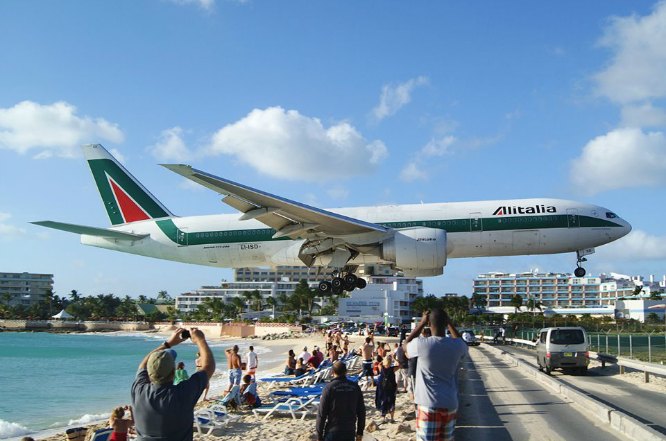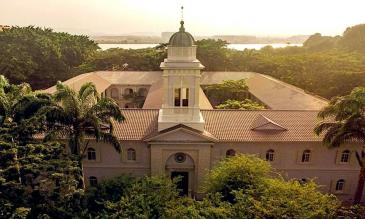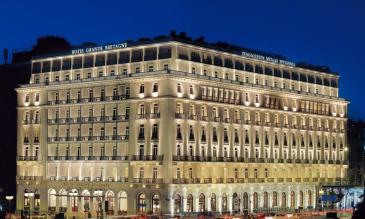Everyone loves to travel and most of us find the rush of take-off and landing in a large jet plane fun and exhilarating. Some airports pose more of a risk with this procedure than others and you may be getting more of an adrenalin rush than you bargained for. Let’s take a look at the 11 most dangerous airports in the world.
Juancho E. Yrausquin Aiport, Saba Island
Access to this idyllic picturesque Caribbean island is rather daunting with a runway of a mere 1,300 feet. This is only marginally longer than a marine aircraft carrier runway. Flanked by dramatically steep cliffs, the runway leads directly to a perilously steep slope, which dives directly into the sea.
The island has suffered a decline in tourism as a result of having such a dangerous airport. The smallest pilot error, particularly with larger planes, can lead to the aircraft careering down into the abyss. Even pilots with smaller aircraft find navigating this treacherous landing strip a challenge.
Toncontin International Airport, Honduras
This airport is situated in Tegucigalpa, capital city to Honduras. The History Channel rates this as the second most dangerous runway in the world and credits it mainly to the fact that is sits in a valley surrounded by mountainous terrain. With aircraft as large as 757’s landing on a daily basis, pilots have to execute some stomach churning manoeuvres to manage the line-up to the runway for a potentially hazardous landing. The runway measures just less than 7,000 feet long and the only way in or out is through this treacherous navigation path.
Toncontin has been the subject of high scrutiny after a Taca A320 slid off a rain-soaked runway and onto a nearby road in 2008, causing the death of four passengers and one on the ground. A new International airport has been planned.
Gibraltar Airport, Gibraltar
Situated on the strip between the Mediterranean and the Bay of Gibraltar, this 6,000 foot runway is not for the faint hearted. The pilot must engage full breaks on landing in order to avoid ending up in the ocean. Often the winds are too high for landing and aircraft are re-directed to Malaga Airport in Spain.
To make things even more challenging, the runway has the Gibralta’s main arterial access way running across it, and motorists and pedestrians must wait for take-off and landing before crossing. Thankfully, there have never been any major accidents.
Madeira Airport, Portugal
There are two main runways here, measuring 5,250 feet in length. A horrific accident happened in 1997, where a Boing 727 careered through a stone bridge and onto the nearby beach. Subsequent adjustments were made to the runway and, supported by raised columns, was extended to run over and above the beach.
The approach is unique as the pilots need to exercise intense focus to aim for the peak, then immediately veer right to avoid contact with the mountain and safely line up with the runway.
Wellington Airport, New Zealand
The crystal waters and beautiful lush green hills are the first glimpse of this pretty approach to New Zealand’s capital. This may be mesmerising, but the sight of the short runway can snap you out of this dreamy state pretty quickly! It measures a mere 6,351 feet and if the pilot gets it wrong, it’s straight into the ocean. The other challenge pilot’s face is the complex approach through the hilly landscape, coupled with the often gale force cross winds. Disembarkation can be a nightmare for the wary passenger with hurricane force gusts that sweep through the tarmac.
Princess Julian International Airport, Saint Martin
Being the second busiest airport in the Eastern Caribbean, the short 7, 152 foot runway is mainly suited for small to medium sized jets, but regular landings are made by the larger Boeing 747’s and A340’s from Europe. The popular Maho Beach sits at the tip of the runway and landing aircraft fly in low giving beach goers a very up close and personal aircraft experience, barely skimming the perimeter fence to the runway.
Barra Airport, Scotland
Traigh Mhor beach is literally “the” runway in Barra. This tiny island is situated at the edge of the Atlantic in the Outer Hebrides of Scotland and has a wide shallow bay onto which chartered and scheduled aircraft negotiate a landing. This has provoked much curiosity amongst the aviation fraternity. The type of landing experience largely depends on the tide and the cockle picking locals scatter once they see the wind stocking raised, as this is the tip-off that the specifically adapted Twin Otter propeller planes are approaching.
Gustaf III Airport, Saint Barthelemy
The corridor in which the runway of this Caribbean island runs through is very narrow and has a tiny runway length of only 650 meters. It is consequently open specifically to scheduled and private charter services. Only the most experienced pilots negotiate this white knuckled landing strip and are constantly challenged by the cramped angle approach, many hills, and unpredictable wind conditions. The runway strip ends directly onto St jean’s beach, making it a popular plane-spotting jaunt for the rich and famous who frequent this island.
Paro Airport, Bhutan
This airport is so insanely perilous that it is widely hailed as the world’s most dangerous! There are only eight pilots in the world qualified to land here. Nestled inside the mountains 7,500 meters above sea level, it is surrounded by 16,000 foot Himalayan peaks.
Flights are only permitted during daylight hours and are under strict visual meteorological conditions. The pilot must make precision judgements by using only the naked eye to successfully navigate the narrow cliff flanked entry and exit channel.
Courchevel, France
Attached to the huge ski resort of Les Trois Vallées in the French Alps, this short runway is only 1,722 feet long and uncannily resembles a ski slope in itself. Pilots undertake rigorous training and must negotiate a vertical mountainside drop at the end of the runway. This is made more treacherous by ice, snow, and unpredictable wind gusts.
Kai Tak International Airport, Hong Kong
Closed in 1998, the notorious “Hong Kong Turn” leaves a trail of deadly accidents and mishaps. Decent was a pilot’s worst nightmare where they had to navigate through surrounding city skyscrapers and craggy mountains. Tall buildings were often clipped by aircraft wings and many aircraft attempting to make its way to the runway ended up in Victoria Harbour. It is now succeeded by the new nearby Hong Kong International Airport

 En
En Es
Es Fr
Fr











